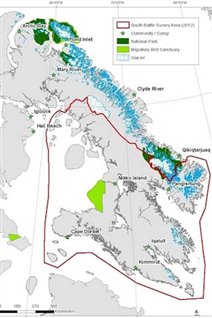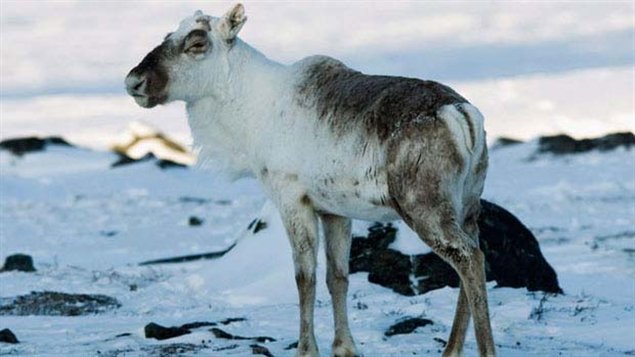It’s a shocking decline. In the past 20 years, caribou numbers have dropped by about 95% in the southern region of the island

A survey by the territory of Nunavut in northeastern Canada conducted in 2012 and released last Thursday, confirms what elders and hunters have been saying, that it’s getting much harder to find caribou there.
Estimates from the early 1990’s put the herd number between 60-thousand to 180 thousand.
This recent survey, announced by Nunavut’s environment minister, James Arreak, is the first comprehensive count of the animals. Elders, hunters and communities have expressed The survey report is called “Estimating the Abundance of South Baffin Caribou.
No immediate reason for the decline was given but the communities on the island have expressed concerns about the negative impacts of land use and other factors on caribou and their habitat. The survey however cites climate change, disease, and anthropogenic activities, including mineral development and unrestricted harvest, as possible threats to the herd.
Meanwhile, a recent survey of the Beverly herd shows a major decline as well. The Beverly caribou range across a vast area of the Northwest Territories, northern Saskatchewan and Manitoba and Nunavut. In 2011 the herd was estimated at 124-thousand animals, compared to the last calving ground estimate of 1994 which put the figure at more than double at 270-thousand animals.
Ross Thompson, executive director of the Beverly and Qamanirjuaq Caribou management board, said the Beverly herd’s decline needs to be taken seriously.
“It’s a combination of factors that stem from habitat changes, harvest is certainly a factor, predation… all these things that are called cumulative effects have added up, I think, to cause the decline,” he said.
Many communities in the far north depend on caribou as an important source of food.







For reasons beyond our control, and for an undetermined period of time, our comment section is now closed. However, our social networks remain open to your contributions.